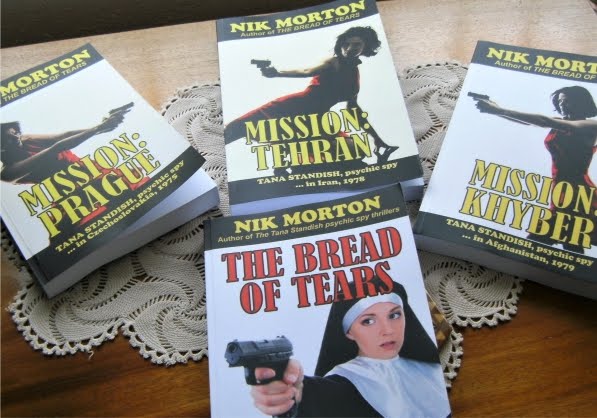Scott Tracy Griffin’s follow-up to his successful coffee-table tome Tarzan: The Centennial Celebration (2012) is Tarzan on Film (2016), a 224 page (10"x13") generously illustrated, fact-packed appraisal of the 52 Tarzan movies and telefilms and seven TV series.
It begins with a foreword by Casper Van Dien, the twentieth
actor to portray Tarzan, offering a few anecdotes from his filming of Tarzan
and the Lost City. Throughout, there are many other fascinating insights and
anecdotes concerning the actors, actresses and directors. The book is a feast
for Tarzan fans and for anyone fascinated by the movie business.
The Tarzan franchise was the most profitable in history
until the James Bond movies took off in the 1970s. The only other fictional
character to have been a serious contender for the number of movie and TV
adaptations is Sherlock Holmes.
Edgar Rice Burroughs’ first Tarzan story was published in
1912 in magazine format and subsequently as a novel. Twenty-three novels
followed. It was inevitable that this iconic character would find himself on
the silver screen. In 1918 the silent movie appeared, Tarzan the Ape Man, starring Elmo Lincoln. As
we know, Hollywood didn’t really buy into the complete ape-man, only aspects of
him. Until relatively recently, he was presented as a grunting, monosyllabic
strong yet simple man, while in the books he possessed a remarkable inherited
intellect, teaching himself to read and speak several languages, including
French, English, German, Arabic, Dutch and a host of African dialects.
The first talky Tarzan film was Tarzan the Ape Man (1932),
starring former Olympic swimmer Johnny Weissmuller; he appeared in twelve Tarzan
movies and is still fondly regarded by fans. The scripts required the ape-man to
appear a noble savage capable of only speaking broken English. One exception was the
Burroughs co-produced The New Adventures of Tarzan (1935), starring Herman Brix (also
known as Bruce Bennett). The “me Tarzan, you Jane” characterization persisted
until the late 1950s, when producer Sy Weintraub produced Tarzan's Greatest
Adventure (1959) featuring Gordon Scott. It must have been strange for
Scott to present an ‘educated’ ape-man having already starred in four ‘monosyllabic’
Tarzan films. The Weintraub productions portray a Tarzan that is closer to
Edgar Rice Burroughs' original concept in the novels; subsequent outings have
maintained that stance with Ron Ely et al.
There are interesting biographies of the actors and actresses
who played Tarzan and Jane over the years, and others besides. Despite the
scripts, the stories and actors brought in the audiences in their droves. Each
actor added something to the myth. Take, for example, Jock Mahoney,
ex-stunt-man and TV’s Range Rider,
who was the oldest actor at 42 to accept the legendary loin-cloth. He was
suggested to replace Weissmuller and Lex Barker but didn’t take the role until
1960, superseding Scott. ‘Mahoney added 20lbs of muscle to his 6’4 frame,
expanding his chest to 50” atop a 31” waist, while maintaining his lean corded
appearance at 215lbs.’ It was just as well that he was fit. While filming Tarzan’s Three Challenges (1963) he was
required to swim in the Klong River in Thailand. The river was polluted with
human waste and rubbish. He swallowed the water and suffered dysentery, dengue
fever and pneumonia, his weight plunging to 175lbs, finishing the film quite
gaunt. The show must go on, indeed: ‘Following the final sequence, the
delirious Mahoney, who was fainting several times a day, was rushed back to the
hotel where co-star Woody Strode put him in an ice bath and fed him antibiotics
like candy.’ Strode said that anybody but Jock Mahoney would have died. He took
two years to recover his health and went back to work (sans loin-cloth).
Also covered are the two 2016 movies The Legend of Tarzan and the animated Netflix series Tarzan and Jane.
Besides the many still photographs, there are numerous film
posters; indeed, some of the older ones are frankly poorly illustrated, but of
their time.
Even after almost a hundred years, the movie Tarzan is still
a phenomenon and this book does the franchise justice. A collector’s item, to
be sure.


























No comments:
Post a Comment